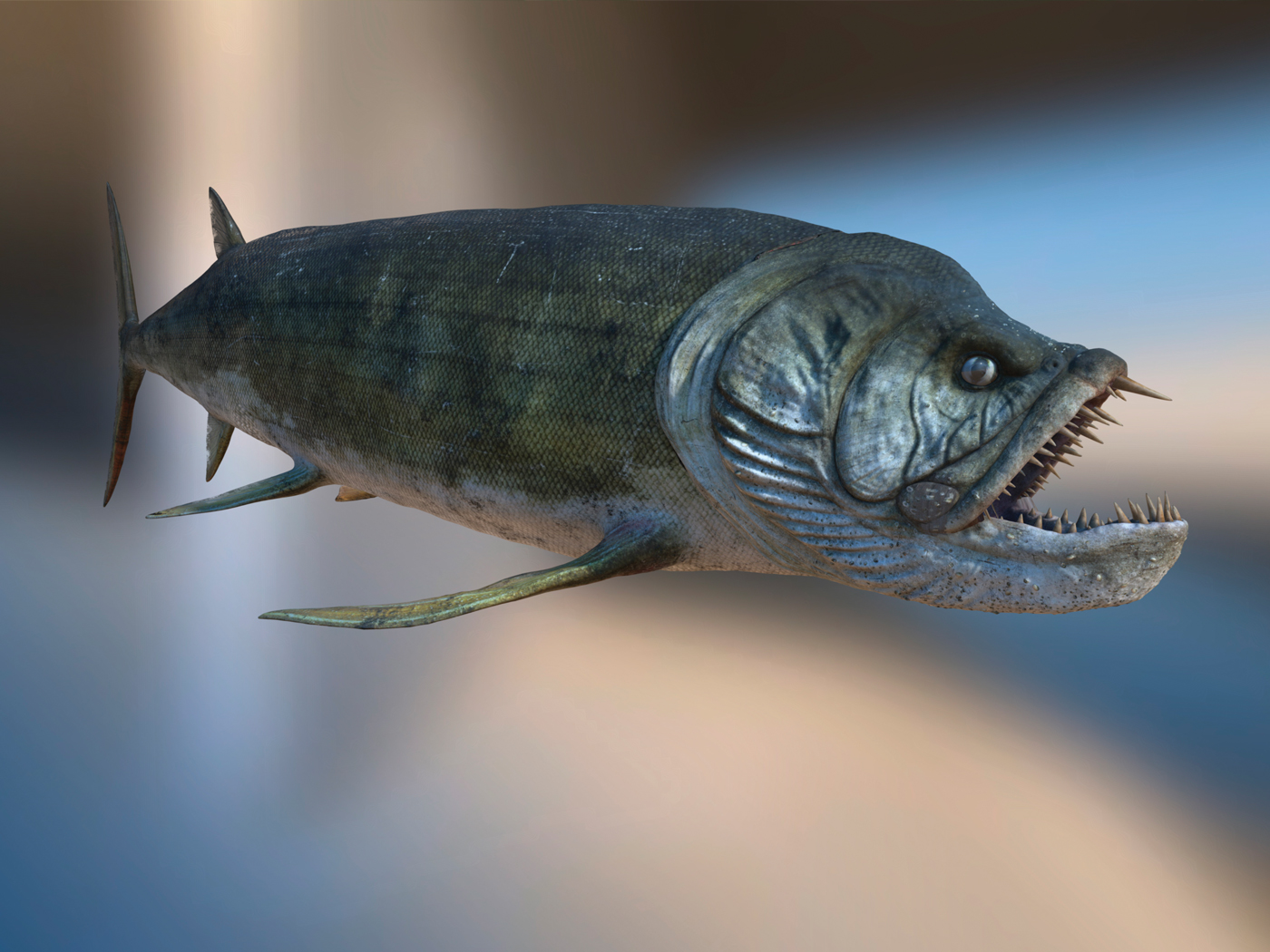Doctors, lawyers, and engineers. Engineers always seem to take third place in the list of esteemed professions. Exciting television programs feature skilled surgeons or smooth, well-dressed defense attorneys, but engineers are not primetime stars. That’s too bad, because they do exciting work, as reflected in one school’s motto, “Cool stuff doesn’t just make itself.”
Perhaps the coolest creations are the self-adjusting inventions, like spacecraft that maintain function even in challenging conditions. Living things also have this remarkable capability, only they do it far better. Could an engineer’s use of physics-based principles in design studies also be used to explain how organisms adapt?
What if the widely held notion of ecology-driven adaptation—established long before insights of molecular biology—is fundamentally wrong? What if organisms operate like self-adjusting entities capable of solving a broad range of environmental problems, empowering them to pioneer into new niches?
Design engineers approach the question of adaptation in organisms as they would address changes in human-designed inventions that self-adjust in fluctuating environments. They ask, “What if engineering principles also explain how organisms adapt?”
Why Use a Design-Centered Analysis of Adaptation?
Design-centered thinking enriches biological comprehension. Many scientists demonstrate unmistakable design parallels between the interconnected parts found in man-made items and those discovered in organisms. Within creatures, discoveries of intricate microscopic machines made of parts like switches, valves, and rotors bolster a scientifically observable and quantifiable case for intelligent design. Since design-centered analysis demonstrates that many of these parts are irreducibly complex, this design-based insight proves to be a powerful reason to reject explanations for complex parts as piece-by-piece amalgamations.
Why stop at comparing parts? Since design-based explanations for the origins of organisms expose the profound foolishness of naturalistic explanations, why not extend design-based tenets also to adaptation—and then to development? If the core components of any man-made or living adaptable system are irreducibly complex, then consider the implications to the evolutionist’s scenario in which adaptable systems must get started by strictly natural processes.
Design-based premises suggest that the power for adaptation has always resided solely in organisms controlled by highly regulated innate mechanisms that operate consistently with engineering design principles.
Five Premises of a Radically New Paradigm for Adaptation
Premise One: Design-centered thinking is essential to correctly explain all aspects of biological function.
This foundational premise for understanding living things echoes the message of Romans 1:18-23, part of which says, “Because that which may be known of God is manifest in them; for God hath shewed it unto them. For the invisible things of him from the creation of the world are clearly seen, being understood by he things that are made” (emphasis added). The Creator’s reality is confirmed to those who see unmistakable parallels between features of human-designed things and those found in living things.
Premise Two: The core components of adaptable organisms are irreducibly complex.
Adaptation of designed entities is maintenance of a specified performance suitable to a range of varying exposures through planned intrinsic problem-solving capabilities. Put simply, the purpose of designed adaptation is to solve problems.
Entities must possess a minimum system to maintain adaptable function, comprised of three well-matched interacting components: 1) an input component to gather data on external conditions; 2) a reference program that defines performance in specific external conditions and has a logic segment to compare input data to the reference; 3) an output feature that executes actions maintaining performance. If any one of these components is removed, the system’s adaptability is lost, i.e., the system is irreducibly complex. These well-matched components are intrinsic to adaptable organisms.
Premise Three: The first purpose for reproducing adaptive variable heritable traits was to solve changing environmental challenges, ultimately, to multiply and fill the environments—not to survive.
The Bible is the best place to search for answers. In Genesis 1:22, 26, 28, God commanded, “Be fruitful [divide, differentiate, branch off 1], multiply, and fill the earth.” The Lord directed His creatures to fill environments—before any death or survival stresses existed. Yet these organisms still needed to adapt to varying exposures on earth. Genesis 1 also revealed that the primordial earth was undergoing day-night cycles, and seasons would commence. The very act of creatures filling an environment changed that environment. Plants and animals needed heritable adaptive programming right from the beginning.
Medical researchers and biomedical engineers treat the environment-organism relationship as the connection of a problem to its solution. Could problem-solving also be a reason God designed organisms to adapt?
The outworking of human-designed adaptation parallels the biblical reason for adaptation. Failure to adapt leads to loss of specified performance, but not necessarily the destruction of the entity. Conversely, the wholesale destruction of an object has nothing to do with its ongoing adaptation.
Premise Four: The same principles underlying the adaptation to changing environments of human-designed things also apply to organisms.
One hallmark of truly great design is an object’s capability to maintain function in changing conditions—also true for organisms. Organisms possess information-based cellular mechanisms underlying their parts, development, and adaptive abilities.
Premise Five: Pro-resilience complexity is a key component of adaptable systems.
Adaptive traits characterizing resiliency include the ability to resist damage, mitigate loss, or enable quick recovery. Design strategies incorporate these adaptive traits, including brute resistance, passive flexure, and total avoidance.
Resilience encompasses two other characteristics. A resilient entity must be robust, maintaining its general characteristics in changing conditions. Additionally, particular internal and external traits of resilient entities must be plastic, changing within ranges that are specified to allow adequate problem-solving leeway without completely changing the general characteristics. Finally, resilient entities embody a specific form of complexity.
Multiple parts functioning together for a purpose—the parts must match so precisely that no other parts will work—establishes specified complexity. The loss of any single remaining part resulting in the loss of primary function establishes irreducible complexity—a kind of specified complexity. Well-matched interacting components confer a range of problem-solving capacities, preserve general characteristics, and maintain function in uncertain conditions. They establish pro-resilience complexity—another kind of specified complexity.
The engineering-based insights of resiliency describe organismal adaptation and suggest an origin for this capacity. For example, if an organism’s traits were not robust—and they were only plastic—this might suggest unlimited evolutionary change. If an organism’s traits were not plastic, but only robust, this might suggest fixity of species. Pro-resilience complexity identifies living adaptable entities.
Resilience is a design-defined characteristic, meaning that design elements alone are the sole reason traits may not achieve resilience. Thus, traits may not achieve resilience because of a total design bust, or because the design was never intended to cover all external conditions and was expected to be overwhelmed at times. Surprisingly, resilience may also be due to parts that are designed to break, like a car’s crumple features or, perhaps, a gecko’s tail.
An Engineering Design Project Clarifies Design Principles
Suppose you are the engineer in charge of designing a stealthy shallow-water attack submarine. It is vital to hear other craft, but not to be heard by them. Water acoustics vary with many factors, including temperature and saltiness, and the acoustics can change suddenly where rivers empty into the ocean. The submarine will have several propulsion systems, each being the quietest in certain water conditions. It will need to detect very low frequency coded messages from headquarters.
Basically, you need to design something that can rapidly adapt to varying external exposures—a very similar task to the Lord’s work at creation, building into creatures the ability to fill the earth after creation and the Flood.
Where would the engineer start with the submarine?
A water thermometer, salinity sensor, and external microphone are placed on the hull to continuously monitor external conditions and send data. A mechanism to transfer that data to a computer is installed. The engineer programs a computer to continuously compare the streams of data to predetermined ranges so that when incoming data do not match preset parameters, then the computer sends signals to the propulsion system (and other systems) to make immediate changes. Now, you have designed the submarine to adapt its response to the exposures it detects—the sub is adapting itself to, not being adapted by, its environment.
Ten Basic Design Principles
The construction of the submarine’s adaptability features enables you to visualize and comprehend adaptive design principles. Engineers consider ten basic design principles when they approach a new project.
Principle One: Designed things are principally self-contained discrete units or entities. A distinct boundary between the entity and its external environment exists. This remains true even when the unit obtains vital resources from its environment, or one body is also a component of an environment to some other body. Boundaries are not lost, and things are never absorbed into a collective.
Principle Two: Adaptability requires mechanisms to initially sense exposures that are external to their boundaries. A major research university’s robotics text emphasizes this point, saying, “Without sensors, a robot is just a machine. Robots need sensors to deduce what is happening in their world and to be able to react to changing situations.”2
Principle Three: The environment exists as a temporal space of mindless, impartial, and unconscious conditions. From a design standpoint, good information about specific conditions produces well-designed features that are suitable to or “fitting to” an environment.
Principle Four: Since designers focus on suitable solutions to environmental problems, the whole concept of fitness falls into sharp focus. Fitness functionally relates to problem solving and the degree to which a problem is solved (that may not impact its survival). Fitness will also be generally quantifiable and traceable to design features based on their informational criteria. Unhelpful circularities like “survivors survive” or “fitness is realized in survivors because they are the fittest” don’t define fitness.
Principle Five: The entity’s designed features—not the exposure—define any exposure as favorable, stressful, or fatal. For instance, design features can exploit environmental properties (as submarine design utilizes buoyancy), or design features can fail to withstand environmental properties. Consider two different submarines. The hull strength feature—not external water pressure—determines whether diving a mile under water is favorable or fatal.
Now suppose your submarine and three others need to operate among the latest sound-activated mines. Exactly what these mines are able to detect is unknown, so to avoid detection, each sub employs slightly different combinations of sound-dampening and propulsion systems. Two subs remain undetected by the mines and operate safely for months in that area, but two subs are destroyed.
From the submarine designer’s perspective, mines are just another problem in impartial environments. It was the combination of sound dampening and propulsion traits that either succeeded or failed to solve the mine problem, which accurately explains how the remaining subs fit the mined environment.
Why were two subs destroyed? A design failure—a low-frequency antenna was omitted, so it did not receive the headquarters’ warning message of mines—illustrating that design principles are more evident at the entity-exposure interface.
Principle Six: An adaptive entity must detect environmental signals and initiate its own action; environmental signals really don’t operate on an entity. Headquarters was sending a signal in the environment external to the destroyed subs. However, since the sub is a distinct, stand-alone body, environmental signals mean nothing to it unless it has its own detector that is also tuned to sense the signals and an information center to interpret them.
Principle Seven: Any design is a contingent solution with only a probability of solving a problem, but failed solutions are still genuine designs. The sub operators did not know in advance if any of their solutions would solve the mine problem. However, the absence of definitive knowledge of success never negates the fact that solutions are part of the design. Uncertainty of a design’s success is never a good reason to jump to a non-design-based conclusion. Transferring success or failure causality through assumptions such as the environment “selected for” or “weeded out” or “sieved through” problems to produce solutions are inadequate explanations; they would be rejected as “magical” from a design perspective.
The remaining design principles deal with establishing cause; they clarify causality.
Engineers design to control the first cause in “cause and effect” situations for their object, so they precisely identify triggers, signals, inducers, or cues. Precision helps eliminate ambiguous thinking that sees environmental exposures as acting on self-adjusting items.
As a designer, you are temporarily assigned to plan a safe handgun for the police. In your design efforts, you will need to build some type of trigger—a specified action-initiating part—into the gun. The gun’s trigger is the only trigger that matters to you. It was included as part of the object with the purpose of originating action and will be tangibly constructed into the gun.
Principle Eight: For any adaptable entity, the real trigger must be designed as an integral, internally regulated part, needed to sense specified external exposures. In addition, it should be the first part to initiate internally specified actions.
Why is this important? To correctly understand causality within designed adaptability, you must identify the true trigger. Is it really possible for an exposure to cause (drive or pressure) an object’s action or adaptation?
Some will say that a criminal pointing his gun at a policeman was the trigger for the policeman firing a bullet. Yet, another will say that the trigger is a tragic event in the criminal’s youth that pushed him into a life of crime. These usages of the word “trigger” may not always be figurative—some insist that if a person defines a tragic event as a trigger, then it must be a real trigger. It offers a rationale for the events that follow it. But from a purpose-to-shoot and design perspective, the gun’s real trigger—the input component—initiated firing.
Design-based analysis shows that it is not possible for any exposure to skip past a unit’s three irreducibly complex components and cause its action.
Principle Nine: Sensors are the mediators of interactions between an entity and exposures. Sensors are included in the input component for adaptation. A designed object uses receptors and detectors to gather data from exposures that are transmitted inward.
Engineers choose specific exposures and design a sensor applicable to that exposure (e.g., build a thermometer for heat), gradate a scale, and then predetermine a program that causes a range of outputs based on the range of inputs. Thus, it’s the unit’s combination of specific sensor and internal programming that defines any exposure as a cue or signal.
Principle Ten: Designs either succeed or fail to solve problems. But environments never succeed or fail because they aren’t trying to do anything. In all cases, credit or blame resides with designers, not the exposures.
Design Principles Versus the Evolutionary Mechanism
A designer’s approach to explain adaptation differs from an evolutionary biologist’s approach. The differences are evident when you flip things around and force designers to explain design performance using evolutionary language. How long would NASA’s lead engineer keep his job if he explained to the President that the reason for the heart-wrenching loss of space shuttles Challenger and Columbia was due to “strong negative selection,” while the Endeavor was favored by “strong positive selection”? In the world of design, would anyone tolerate mystical explanations like that?
No.
Design-based thinking leads to tangible explanations for performance failures that can be traced back to specific engineering design. Engineers look at the traits of the shuttle, which can be tied to an intelligence-based design failure—which can also be remedied. Evolutionists reject any sort of design process as an explanation for adaptation.
Theoretical Advantages of a Design-Centered Analysis of Adaptation
Design-based approaches could bring focus to adaptation research. Adaptation covers everything from rapid actions maintaining homeostasis, intermediate actions resolving abrupt exposures in a few generations, and generational actions to solve long-term environmental problems. Different highly regulated mechanisms in assorted combinations could be involved in each scenario—but how?
Research describing adaptive processes in organisms reveals preliminary evidence supporting the parallels between human engineering of adaptive items and the self-adjusting organisms. Studies provide examples of three components that make up a self-contained package; they first detect exposures, mediate data, analyze data in a reference/logic program, and then act in some form of gene regulation or through signals sent to other control mechanisms. Every component is complex, necessary, and should not be overlooked.
The principles guiding man-made adaptive systems lead to this hypothesis: Organisms (individuals and progeny) go through space-time with innate adaptive capacity to detect environmental exposures, fail or succeed at problem solving, and then fill niches.
Design-based approaches promote new questions and hypotheses. Is it possible that traits are not acquired in populations in response to selective pressures? In contrast, is it possible that traits may already exist in a population for a combination of environmental conditions that, remarkably, have not yet even appeared? And could a segment of the population expressing the fitting trait coexist with the parent population in side-by-side niches without necessitating the death of either? Or could an uninhabited environment simply exist and only become “favorably” exploited after a population of organisms expresses new suitable traits?
Take the usual explanations for trait appearances in blind cave fish. Evolutionists claim that these are “a change driven by the remote cave habitat,” and creationists typically assert that “the loss of eyes is attributed to informational loss—not creation—showing the limits of ‘selection.’ ”
What if both were off target? The regression of eyes, loss of body pigment, increase in olfactory sensation, etc., are found not only in blind cave fish, but also crayfish, snails, salamanders, insects, and other creatures. Does not the rapid development of similar traits in a wide range of creatures seem to fit better with the principles of an intentional design to solve problems in cave environments? Cave-friendly features may stem from highly regulated adaptive mechanisms initiated in embryonic development, possibly, by a light-sensitive detector in a developing neurological area of the creature. Finding another realm of nature showing unambiguous evidence of design would be a strong challenge to evolution. Perhaps taking into consideration the engineering school motto is a good starting point, because design principles demonstrate that cool stuff doesn’t just make itself.
References
- Harris, R. et al. 1980. Theological Wordbook of the Old Testament. Chicago, IL: Moody Press, 733-734. Analysis of Heb parah and derivatives.
- Sensor Design. Course notes for Introduction to Engineering Design, taught by James F. Young at Rice University. Posted on clear.rice.edu/elec201.
* Dr. Guliuzza is ICR’s National Representative.
Cite this article: Guliuzza, R. 2012. Engineered Adaptability. Acts & Facts. 41 (10): 11-14.




















